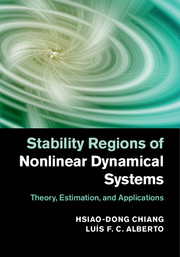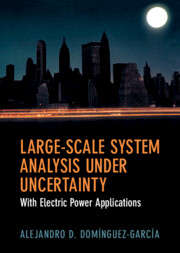Stability Regions of Nonlinear Dynamical Systems
This authoritative treatment covers theory, optimal estimation and a range of practical applications. The first book on the subject, and written by leading researchers, this clear and rigorous work presents a comprehensive theory for both the stability boundary and the stability regions of a range of nonlinear dynamical systems including continuous, discrete, complex, two-time-scale and non-hyperbolic systems, illustrated with numerical examples. The authors also propose new concepts of quasi-stability region and of relevant stability regions and their complete characterisations. Optimal schemes for estimating stability regions of general nonlinear dynamical systems are also covered, and finally the authors describe and explain how the theory is applied in applications including direct methods for power system transient stability analysis, nonlinear optimisation for finding a set of high-quality optimal solutions, stabilisation of nonlinear systems, ecosystem dynamics, and immunisation problems.
- Clear, comprehensive, and the first book on the subject
- Written by leading researchers in the field
- Proposes new concepts and details relevant practical applications
Reviews & endorsements
This book offers a comprehensive exposition of the theory, estimation methods, and applications of stability regions and stability boundaries for nonlinear dynamical systems. … All the proofs are given in a rigorous manner and various examples are presented for illustration. The book is written concisely and will provide very useful guidance for researchers and graduate students who are interested in dynamical systems and their applications.' Vu Hoang Linh, Mathematical Reviews
Product details
August 2015Hardback
9781107035409
484 pages
244 × 170 × 27 mm
1.08kg
172 b/w illus. 16 tables
Available
Table of Contents
- 1. Introduction
- Part I. Theory:
- 2. Stability, limit sets and stability regions
- 3. Energy function theory
- 4. Stability regions of continuous dynamical systems
- 5. Stability regions of attracting sets of complex nonlinear dynamical systems
- 6. Quasi-stability regions of continuous dynamical systems - theory
- 7. Stability regions of constrained dynamical systems
- 8. Relevant stability boundary of continuous dynamical systems
- 9. Stability regions of discrete dynamical systems
- Part II. Estimation:
- 10. Estimating stability regions of continuous dynamical systems
- 11. Estimating stability regions of complex continuous dynamical systems
- 12. Estimating stability regions of discrete dynamical systems
- 13. A constructive methodology to estimate stability regions of nonlinear dynamical systems
- 14. Estimation of relevant stability regions
- 15. Critical evaluation of numerical methods for approximating stability boundaries
- Part III. Advanced Topics:
- 16. Stability regions of two-time scale continuous dynamical systems
- 17. Stability regions for a class of non-hyperbolic dynamical systems - theory and estimation
- 18. Optimal estimation of stability regions for a class of large-scale nonlinear dynamic systems
- 19. Bifurcations of stability regions
- Part IV. Applications:
- 20. Application of stability regions to direct stability analysis of large-scale electric power systems
- 21. Stability-region-based methods for multiple optimal solutions of nonlinear programming
- 22. Perspectives and future directions.






